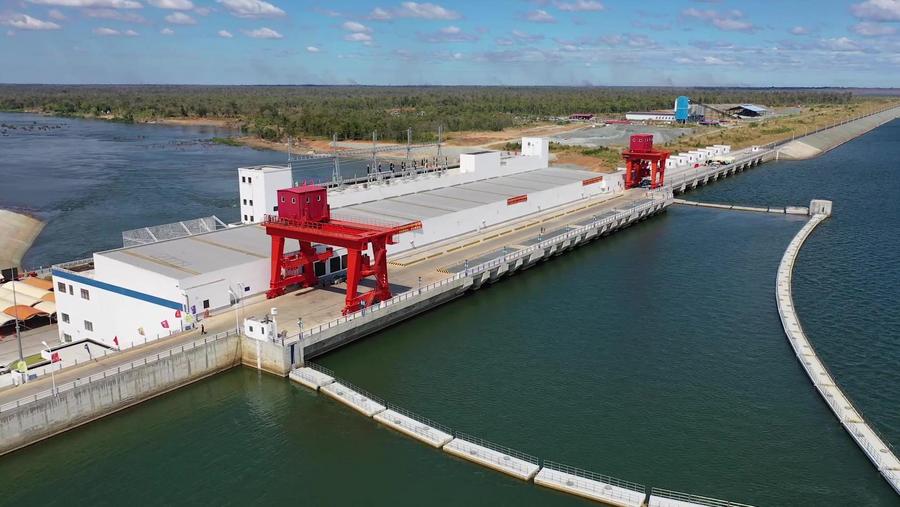China Challenges Philippines in South China Sea Standoff
The recent confrontation between Chinese and Philippine naval forces near Scarborough Shoal serves as another troubling example of Beijing’s increasingly aggressive maritime tactics. In this latest incident, a Chinese frigate executed high-risk manoeuvres against the Philippine navy’s BRP Emilio Jacinto—an act that not only heightened tensions but also reinforced a growing pattern of coercion in the South China Sea. The Shoal, long a contentious flashpoint, remains symbolic of China’s broader ambitions to assert control over strategically vital waterways, where sovereignty disputes often mask deeper geopolitical motivations.
While Beijing insists such actions are routine assertions of its territorial claims, they reflect a far-reaching strategy aimed at consolidating dominance in contested waters. China is methodically challenging diplomatic norms, testing the reactions of neighbouring states, and gradually expanding its influence without triggering open conflict. This calculated pressure raises concerns about regional stability, trade security, and the resilience of international efforts to maintain a rules-based order in global maritime governance. The Philippines and its allies must carefully navigate this evolving threat to safeguard their territorial rights and economic interests.
Scarborough Shoal has been a flashpoint of tension since China took control from the Philippines in 2012. Despite repeated diplomatic objections, Beijing has remained assertive, frequently challenging Philippine and allied naval presence in the region.
In the latest confrontation, which occurred during U.S.-Philippine military exercises, Chinese warships engaged in manoeuvres that risked direct collisions. The Philippine military condemned the actions as “threatening and provocative,” highlighting China’s growing willingness to escalate tensions. Beijing, in turn, accused Manila of trespassing—a familiar claim in its broader strategy of territorial assertion.
This raises a critical question: Is China merely demonstrating its naval dominance, or is it actively testing the limits of maritime confrontation to establish control over contested waters? The Shoal remains a focal point in the wider geopolitical struggle for influence, reinforcing the strategic importance of naval power in shaping territorial realities.
China’s increasing assertiveness has already strained diplomatic relations in Southeast Asia. By challenging Philippine sovereignty in its exclusive economic zone (EEZ), Beijing risks alienating not only Manila but also other regional actors who rely on the stability of the South China Sea for trade and security. One of the primary concerns is China’s disregard for international maritime law. Its expansive claims over the South China Sea contradict the 2016 ruling by the Permanent Court of Arbitration, which found that Beijing’s assertions lack legal standing under the United Nations Convention on the Law of the Sea (UNCLOS).
By continuing aggressive naval actions, China signals its intent to override internationally recognized maritime boundaries. Additionally, the economic and trade implications of these tensions are significant. The South China Sea is a vital conduit for global commerce, facilitating nearly $3.4 trillion in annual trade. Unchecked hostilities could disrupt freedom of navigation, destabilizing supply chains and prompting businesses to reconsider their reliance on regional trade routes. The growing pressure on allied responses further complicates the situation.
The United States and its allies, including Japan and Australia, have increasingly indicated a willingness to counter China’s maritime expansion. While diplomacy remains the preferred approach, the escalating frequency of confrontations raises the possibility of military action if Beijing continues to dismiss diplomatic protests. The situation underscores the broader geopolitical struggle in the region, with lasting implications for international stability.
Beijing’s naval manoeuvres are not isolated incidents; they fit into a larger strategy of incremental dominance over contested maritime regions. By employing tactics such as gray-zone warfare—a strategy where coercion remains just below the threshold of armed conflict—China attempts to wear down resistance while avoiding full-scale military engagement.
The effectiveness of this approach is evident as smaller regional actors face continuous pressure without clear avenues for immediate retaliation. Diplomatic protests are frequently disregarded, with China asserting its own interpretation of sovereignty and international law, often contradicting established norms and rulings. Meanwhile, maritime control is slowly cemented through persistent naval presence and strategic infrastructure development, ensuring long-term dominance over contested waters. This calculated approach allows China to expand its influence while keeping tensions below the threshold of open conflict, gradually shifting the balance of power in its favour.
This strategy has proven successful in other contested areas, such as the militarization of artificial islands in the Spratly archipelago. The Philippines now faces a similar challenge in its own waters.
The incident at Scarborough Shoal is a stark reminder of China’s expanding maritime ambitions. The Philippines, along with its allies, must recalibrate its approach—balancing diplomatic engagement with strategic deterrence. Relying solely on protests and legal rulings may not be sufficient, as Beijing has repeatedly demonstrated its willingness to dismiss international norms.
A concerted regional and global response will be necessary to ensure that China’s maritime actions do not escalate into an unchallenged status quo. Whether through enhanced naval cooperation, economic countermeasures, or diplomatic pressure, the Philippines and its allies must work to prevent further erosion of territorial sovereignty in the region.
Ultimately, unchecked aggression in the South China Sea poses broader risks beyond the immediate stakeholders—threatening the economic stability and geopolitical balance of an entire region.













